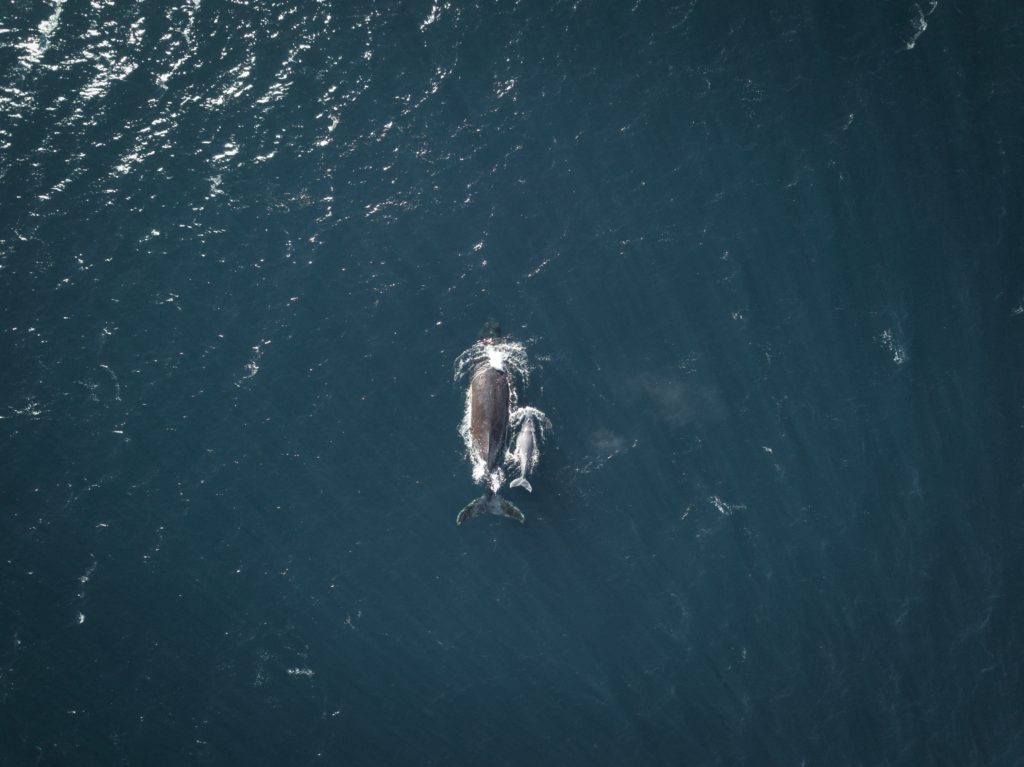By now you’ve probably already heard about the much-hyped feature-length documentary Seaspiracy. It follows Ali Tabrizi and his wife, Lucy, as they attempt to unravel the forces behind the destruction of our oceans. Seaspiracy has already amassed millions of views, and climbed to the top 10 on Netflix in 40+ countries. However, much like any film that takes on multi-billion-dollar corporations, Seaspiracy has received industry backlash. I will discuss the documentary’s key takeaways, and its criticisms below.
Overview
Having recently re-watched its predecessor, Cowspiracy, the introduction’s style appears very familiar. Both documentaries introduce environmentally-conscious yet seemingly ordinary citizens. Here, Ali’s deep fascination with dolphins and whales leads him to embark on a mission to document the oceans. After learning of whales washing up onto beaches with plastic in their stomachs, Ali donates to ocean charities, attends beach clean-ups, and carries around reusable cutlery. There’s an intentionally ironic scene where he calls up a seafood takeaway to ask whether they’d ditch plastic straws to save whales and sea turtles. This sets the tone for the rest of the film. Ali doesn’t want to outright condemn our hypocrisy, he wants to take us along on his journey to show us he once didn’t know any better himself.
Dolphins & Whales
Just about everyone I know loves whales, so segueing into a news item on Japan’s intention to resume commercial whaling was a smart move. Ali travels to Taiji in the south of Japan, where whales and dolphins are captured under a shroud of secrecy. Here we learn that this practice is funded by the marine park entertainment industry. However, excess dolphins are slaughtered as a means of “pest control,” as they compete directly with humans for fish. Thus, here is where we really get into the flesh of the film, and Sea World visitors and fish-consuming viewers likely begin to experience some discomfort.
Bycatch
Sharks are key to healthy oceans, but many species are facing extinction. Shark fin soup consumed across Asia is condemned here, but just before western viewers can breathe a sigh of relief, we’re informed that global fish consumption is even deadlier. Humans kill 11,000-30,000 sharks per hour, with half “accidentally” killed by commercial fishermen as bycatch. The documentary could’ve mentioned that western shaming of shark consumption has led to significantly reduced demand for the product in China, its biggest market, to further highlight the Eurocentric hypocrisy here. Regardless, I believe accusations that Seaspiracy vilifies Asians are totally unfounded. In fact, the unjust condemnation of Asian countries is precisely what they’re getting at—who are you to judge those who directly consume sharks, whales, and dolphins if you indirectly kill far more of these creatures to satisfy your own seafood cravings?
[Editor’s note: China is the world’s biggest fishing country by far, more than the #2–5 combined (Indonesia, India, Vietnam, the U.S.), but much of seafood caught by Chinese fleets end up in the U.S.]
I know I’m not alone in thinking that Ali’s interview with Dolphin Safe Tuna was utterly bizarre. The company’s representative unwittingly convinces the audience that dolphin-friendly tuna is far from a safe bet. Their observers are infrequently out at sea, and when they are, they can be bribed. This is on top of the fact that the company is financially incentivized to slap their label on as many cans of tuna as possible.
Plastic Pollution
Ali learns that abandoned fishing nets comprise 46% of the Great Pacific Garbage Patch, and that long-line fishing sets enough fishing line to wrap around the Earth 500x every day. This latter statistic is something I’m still struggling to fully wrap my head around myself. With plastic organizations reluctant to discuss the role of fishing in plastic pollution, Ali decides to “follow the money.” The pieces fall into place when Plastic Pollution Coalition is revealed to be a project of Earth Island Institute, who are also behind the Dolphin Safe Tuna labels. It’s little wonder they don’t want to encourage eliminating fish consumption.
Climate Change
Next up, climate change is thrown into the mix. As a layperson, I couldn’t quite grasp the science behind animals swimming through water columns, and distributing heat to colder waters below, but the rest of this segment was clear enough. An estimated 93% of the world’s CO2 is stored in the ocean with the help of marine vegetation, algae, and coral. However, trawling wipes out 3.9 billion acres of the seafloor each year, making the 25 million acres of forestland lost annually seem a mere drop in the ocean. I already knew that animal agriculture was the leading cause of deforestation, yet I had never even heard, nor considered the fishing industry’s impacts on our underwater forests.
Unfortunately, Ali cited an outdated statistic that “the ocean will be empty by 2048,” which critics have jumped on like a pack of hungry wolves. However, we shouldn’t take the prospect of fish-less oceans any less seriously, according to marine conservationist Professor Callum Roberts. He states that “at some point you run out. Whether it’s 2048 or 2079, the question is: ‘Is the trajectory in the wrong direction or the right direction?’”
Sustainable Seafood
The claim that there is no such thing as sustainable seafood has been the most controversial aspect of Seaspiracy. Unsurprisingly, those working in the industries that would go bust if consumers turned their backs on seafood altogether are not happy. However, we must look at Seaspiracy’s claim in context. It’s the large-scale commercialized extraction of the ocean’s wildlife that they declare is unsustainable. As Captain Paul Watson, founder of Sea Shepard, recently said, “there is sustainable fishing, but only where artisanal and indigenous fishing communities send out small boats to catch a few fish each day…but these communities are not catching the fish being bought in restaurants in Paris, Madrid, New York or Tokyo.” This type of fishing is practiced by subsistence communities—not by people who access seafood by going to the grocery store.
Corruption & Human Rights Abuses
Governments aren’t ignoring the plundering of the oceans, they’re actively participating in it. Global fishing subsidies amount to $35 billion USD, the same amount of money needed to combat world hunger. Instead, these subsidies are fueling global food insecurities in the developing world, like West Africa. The direct loss of human life is even more upsetting—an estimated 24,000 fisheries workers die every year. I observe that not only are we taking food out of the mouths of those most in need, but we’re making them do the dirty work for us. Commercial fishing heavily relies on slavery and forced labor to stay economically afloat. I’m disturbed by just how easy it is to dispose of these workers at sea, without any repercussions, as government authorities help cover these deaths up.
Fish Farming
Fish farming presents itself as one last glimmer of hope for the seafood-loving viewers. However, optimism quickly fades as we learn that fish farming is just wild fishing in disguise, with wild fish being heavily processed to produce fish feed. Salmon farms in Scotland also produce as much organic waste as the entire country’s human population. With fish susceptible to anemia, lice infestations, chlamydia and various diseases, it’s little wonder that 50% of these salmon die on these farms.
Faroe Islands
The documentary comes full circle in the Faroe Islands where Ali witnesses the ‘grind.’ This is supposedly a sustainable form of whaling, as non-endangered species are targeted. However, color is drained from our faces, as we watch the blood from slaughtered pilot whales turn the sea red. Suddenly, this so-called “sustainable seafood” doesn’t seem so appealing after all. This is perfectly summed up by Ali’s revelation that sustainability simple means “that something could continue on and on forever, regardless of how much suffering it caused.” Before the audience can simmer in anger at the Faroese whalers, one of them points out the hypocrisy of those who condemn him, while eating other animals themselves. He explains that he’d rather kill one whale than 2,000 chickens that would provide the same amount of meat.
Ethics & Health
The science is clear that fish are sentient. They have pain receptors, and express concern when seeing other fish killed in front of them. Furthermore, the myth that you need to consume fish to obtain omega-3 is quickly dispelled. I’m extremely glad they mention that land-based animal agriculture also has negative impacts on the oceans, particularly as the leading cause of ocean dead zones. From an ethical and environmental standpoint, the last thing you’d want viewers to do is swap out fish for other animal proteins.
Solutions
Seaspiracy proposes three solutions for saving our oceans—shifting to a plant-based diet, enforcing no-catch marine reserves, and ending all fishing subsidies. Unsurprisingly, the first solution has attracted criticism from the fishing industry and individuals alike who argue that fish provide food and jobs for millions around the world. However, Seaspiracy’s message is directed at the West and the global North. If you’re in a position of privilege, pointing to impoverished communities who depend on fish for survival to justify your own consumption of fish (which negatively impacts said impoverished communities) is irrational. Furthermore, in deciding whether a certain practice should continue or not, surely ethics and the environment should act as our yardstick, not economics.
Final Thoughts
Overall, I think Seaspiracy is an extraordinary piece of filmmaking. The global attention Seaspiracy has received following its release is unprecedented for an animal-rights film. It has bought one of the greatest crises facing humanity to light, and condemnation from the commercial fishing industry clearly shows that they feel threatened. Equipped with this new information, us individuals are far from powerless. Now that we know better, let’s hope we can all do better.
Get more like this—Sign up for our daily inspirational newsletter for exclusive content!
__
Photo: Seaspiracy via Facebook; Will Turner






